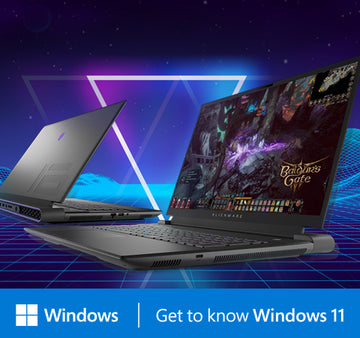In the fast-paced landscape of computer technology, continual innovation is the driving force behind transformative breakthroughs. This article delves deeper into the latest advancements in the field, offering an in-depth exploration of each trend and their potential implications, shaping the future of computing.
1. The Rise of Quantum Computing
Quantum computing stands at the forefront of cutting-edge technology, capturing the imagination of researchers and enthusiasts alike. The fundamental principles of quantum mechanics, such as superposition and entanglement, are harnessed to process information in ways traditional computers cannot. Recent breakthroughs in quantum computing have shown promise, demonstrating the potential for solving complex problems exponentially faster than classical computers. Though still in the early stages, researchers are optimistic about the transformative power of quantum computing across various fields, from cryptography to optimization problems in finance and logistics.
2. Artificial Intelligence and Deep Learning
Artificial Intelligence (AI) and deep learning continue to revolutionize the way computers process information and interact with the world. Deep learning, inspired by the human brain's neural networks, allows computers to learn from vast datasets and make decisions independently. The applications of AI are expanding rapidly, from virtual assistants and image recognition to natural language processing and autonomous systems. As algorithms become more sophisticated and datasets grow, the future holds the promise of AI addressing complex challenges in healthcare, personalized medicine, climate modeling, and more.
3. The Emergence of Edge Computing
Edge computing represents a paradigm shift in how data is processed and managed. Unlike traditional cloud computing, edge computing aims to bring computational power closer to the source of data, reducing latency and enhancing real-time processing. This trend is particularly relevant in the context of the Internet of Things (IoT), where devices require instant processing capabilities. The integration of edge computing is poised to transform industries, enabling faster decision-making and improved efficiency in sectors like manufacturing, logistics, and healthcare.
4. Exploring Bio-Computing
Bio-computing, a burgeoning field, seeks inspiration from biological systems to devise innovative computing methods. Researchers explore the utilization of biological molecules and components for information processing and storage. The potential applications of bio-computing span various domains, from creating bio-sensors for medical diagnostics to developing environmentally friendly computing methods. While in its early stages, bio-computing holds the promise of revolutionizing computation by leveraging the efficiency and complexity inherent in biological systems.
5. Practical Implementation of Quantum Communication
Quantum communication represents a groundbreaking approach to secure information transmission. Harnessing the principles of quantum entanglement, quantum communication ensures secure data exchange by detecting any eavesdropping attempts. Recent experimental successes have demonstrated the practical viability of quantum communication, offering a glimpse into a future where secure communication is achieved through quantum key distribution. As technology matures, quantum communication may become a cornerstone in securing sensitive data across various industries.
6. Neuromorphic Computing: Mimicking the Human Brain
Neuromorphic computing, inspired by the architecture and functioning of the human brain, is gaining prominence in the pursuit of more efficient and adaptable computing systems. These systems mimic the parallel processing capabilities and pattern recognition of the brain, enabling them to excel in tasks such as image recognition, speech processing, and decision-making. As research progresses, neuromorphic computing could usher in a new era of energy-efficient and highly capable computing systems, particularly in fields requiring advanced pattern recognition, like robotics and autonomous vehicles.
7. 5G Technology and Connectivity
The rollout of 5G technology is poised to revolutionize connectivity and communication. The fifth-generation wireless technology promises significantly faster data transfer speeds, lower latency, and increased network capacity. With the ability to connect an unprecedented number of devices simultaneously, 5G is expected to catalyze advancements in smart cities, augmented reality, virtual reality, and the Internet of Things. The widespread adoption of 5G is anticipated to reshape how individuals, businesses, and devices communicate and interact in the digital landscape.
8. Augmented and Virtual Reality Integration
Augmented Reality (AR) and Virtual Reality (VR) are evolving beyond entertainment and gaming, finding applications in diverse sectors. In healthcare, AR assists surgeons with precise procedures, while VR is employed for immersive training experiences. In education, AR and VR enhance learning through interactive simulations. The integration of these technologies is poised to revolutionize industries such as manufacturing, architecture, and remote collaboration, providing immersive and interactive experiences that were once deemed futuristic.
9. Sustainable Computing Practices
As the world grapples with environmental concerns, sustainable computing practices are gaining traction. From designing energy-efficient hardware to optimizing algorithms for reduced power consumption, the industry is actively seeking eco-friendly solutions. Cloud providers are increasingly investing in renewable energy sources to power data centers, and the concept of circular computing, focused on minimizing electronic waste through repair, refurbishment, and recycling, is gaining prominence. As sustainability becomes a central focus, the future of computing is expected to be characterized by environmentally conscious practices.
10. Human-Computer Integration
Advancements in human-computer integration are fostering a more seamless interaction between individuals and machines. Brain-computer interfaces (BCIs) are allowing direct communication between the brain and computers, opening avenues for applications in healthcare, assistive technology, and even entertainment. The convergence of humans and computers is likely to redefine the way we interact with technology, blurring the lines between the physical and digital worlds.
In conclusion, the landscape of computer technology is undergoing a profound transformation, with each trend presenting new possibilities and challenges. The integration of quantum computing, artificial intelligence, edge computing, bio-computing, and other emerging technologies promises to shape the future in unprecedented ways. As these advancements continue to unfold, the intersection of technology, society, and the environment will undoubtedly define the next era of computing.





